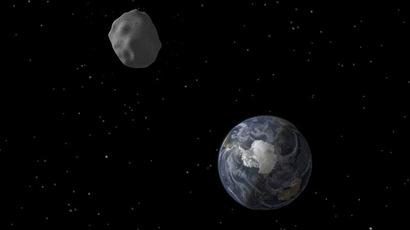Solar threat: Space weather center seeks to defend UK against extreme storms

A £4.6 million Space Weather Operations Centre opened in the UK on Wednesday. It was founded to protect Britain’s economy and infrastructure from severe space weather sparked by violent solar activity.
The most severe space storms can wreak havoc on Earth, potentially affecting radio communication systems, satellites and power grids. As a result, the UK government has requested the Met Office in Devon extend its forecasting remit from terrestrial weather systems to those common to outer space.
Meteorologists began coordinating operational forecasting several weeks ago, working alongside US experts. In a collaborative effort with the US National Oceanic and Atmospheric Administration and a group of UK agencies, the center will forecast the potential impact of powerful solar phenomena on Earth.
As part of the government’s National Security Strategy, a National Risk Register is compiled and published annually. In tandem with Icelandic volcanic eruptions and the flu virus, solar storms are now categorized in the register as among the most serious threats facing the country.
Because such space storms are thought to hold the potential to create economic chaos, the government has sanctioned an array of contingency measures to preserve and protect the UK’s national and financial security.

In the most recent National Risk Register, published in 2013, the report explains that “space weather, including geomagnetic storms, radiation storms and solar radio noise, has different terrestrial impacts and is the result of different types of solar phenomena, including coronal mass ejections (CMEs), solar energetic particle events, solar flares and solar radio bursts.”
The government Risk Register says particularly severe space weather patterns could negatively impact a broad range of “technologies and infrastructure, including power networks, satellite services, transport and digital control components.”
While space weather patterns have long been of concern to scientists and state authorities, experts argue an increasing reliance on technology has left society more exposed. A particularly severe solar flare could create high voltage currents in terrestrial electricity networks, potentially inducing power cuts that could last for days or even weeks.
Solar activity tends to wax and wane in cyclical patterns of approximately 11 years. A particularly powerful storm in 1859, for example, has long intrigued scientists. Originally documented by one of Britain’s most celebrated solar astronomers, Richard Carrington, the storm revealed the most extreme solar flares and radiation storms ever recorded.
According to NASA publication Science News, skies all over the world “erupted in red, green, and purple auroras so brilliant that newspapers could be read as easily as in daylight”. Visually arresting auroras could also be seen over Cuba, the Bahamas, Jamaica, El Salvador, and Hawaii.

A primary objective of the Space Weather Operations Centre will be to isolate and chart solar activity.
“We'll be analyzing sun spots to see how complex they are,” Chris Bulmer, a Met Office space forecaster, told The Guardian.
“We know that certain sunspot groups are very unlikely to produce coronal mass ejections (CME), whereas others are highly likely to,” he said. “So we can forecast an elevated risk of a big solar flare or one of these CMEs happening.”
Aside from its weather forecasting dimension, the UK Met Office is a center of expertise on research relating to climate change. Its unwavering scientific prognosis on the dangers of global warming has been unwelcome among many UK-based climate sceptics.
“The world is getting warmer and that is due to human activities,” Rob Varley, chief executive of the Met Office, recently told the Financial Times.
“There is also a clear statistical correlation between global warming and more extreme weather,” he added.














